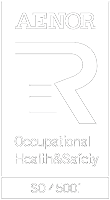“Circular economy” needs Enhanced Rail Transport Infrastructure
For the past 40 years, Tratos has been key in helping to develop and enhance many of the existing Fire Performance standards required for power and signalling cables installed within the Railways and Mass Transit industry, which in turn has led to the development of new solutions to ensure increased safety and performance. Tratos produces flame retardant cables that are halogen free and low smoke.
Tratos has also produced a new generation of cables to improve security and to reduce the risk of copper theft on the railways. Thanks to all these continued improvements Tratos is a leader of Health and Safety innovation in Railways and Mass transit applications.
Rail has the opportunity now to enter a second ‘golden age’. Greater reliability, a move towards greener operating practices and better connections will all play a part. Better technology is emerging too with early tests of new Hydro Trains. Hydrogen-powered trains, arguably the greenest trains ever to lay wheel on track, are now live.
These Hydroflex trains have been described as mini power stations on wheels. The good news is, they don’t emit harmful gases. Hydrogen and oxygen produce electricity, water and heat for this new-generation green rolling stock, and, if things go to plan, they’ll leave diesel trains in the sidings.
While they’re not fully ‘green’ they are a giant step forward, and their design is destined to be developed and refined until their environmental credentials are of the highest order.
There are challenges still outstanding. The hydrogen tanks, fuel cell and batteries sit inside a carriage that should be carrying people or goods. The earliest mobile phones had batteries carried in a separate briefcase: it cannot be inconceivable that technology to solve these issues will be developed fast. We’re not there yet, but we are going the right way.
A quarter of the UK’s trains run solely off diesel and the government wants them gone by 2040. The argument that trains are greener must work harder if we’re to convince people to ditch their fossil-fuelled cars for rail. This new technology, when it eventually comes online widely, makes it harder to deny the green trade off when we ditch the car for the train.
However, there is the technology and infrastructure outside the train to consider. Diesel-powered trains are a necessity in the UK where two thirds of our rail lines do not have overhead cabling required by electric trains. Our trains have to run off electricity where there are overhead cables and diesel the rest of the time. It’s not the best solution for the environment, but it will be around until hydrogen comes along.
The hope is that the new hydro-trains will be carrying passengers in the UK in two years.
Here is an industry looking at what is wrong, how to fix it and going for it. It has to be sustainable for its business to survive.
Network Rail is responsible for operating, maintaining and investing in the UK Network Rail Infrastructure. It has a further responsibility to deliver a modern and integrated network that can be relied upon by commercial customers and trusted by the public. It operates within a sector that everyone feels invested in. It is challenging in the extreme to please all. Network Rail is in the spotlight. Under these conditions of extreme scrutiny, it has to deliver a world-class infrastructure that keeps pace with progress and the aspirations for the UK’s transport systems.
Tratos believes working in partnership with independent innovators is one of the ways rail operators can broaden their options for creating a greener, safer service.
The arrival of CPR has an impact and working more closely with cable manufacturers will help Network Rail better meet its obligations to keep people safe.
The CPR standard was designed to determine the likely spread of fire through a structure. As cables run throughout buildings, between floors and through walls, they are a natural conduit for the spread of fire.
Cable installed in a tunnel will be covered by CPR in the same way cable is within a structure. A closer working relationship with cable manufacturers – who have to be fully conversant and compliant – would ensure NR is kept aware and alerted to CPR issues. A closer relationship with potential suppliers within the industry has multiple benefits, ensuring that such cable meets the requirements of CPR is just one example.
Because of this distance Network Rail doesn’t know what it doesn’t know – and we would like to see that change. There are only advantages to having the UK’s biggest rail stakeholder sitting on the shoulder of innovation as it happens.
Tratos innovates across a varied cable range specifically for applications in the Railways and Mass Transit Markets:
- Trackside power cables including feeder cables
- Trackside signalling control and communication cables; including fire performance cables
- Stations and premises cabling including enhanced fire performance types
- Railway rolling stock cabling including pantograph cables
- Tratos is also a leading manufacturer of flexible cables for intermodal loading and unloading transfer cranes.
Tratos is asking rail operators to think differently when it comes to procurement, in favour of judging on a ‘whole life’ cost for cable. What that means is, instead of looking at the price at the point of purchase, look at the longevity and advances brought by the investment. Short-termism is never going to win the gains we should all be seeking to implement. Yes, there is a cost, but over the lifetime of gains for that investment, the cost is converted to invaluable future-proofing. When infrastructure projects are undertaken, it pays to install future-proof cables, and install it once.
Tratos is actively campaigning for change in the following areas:









